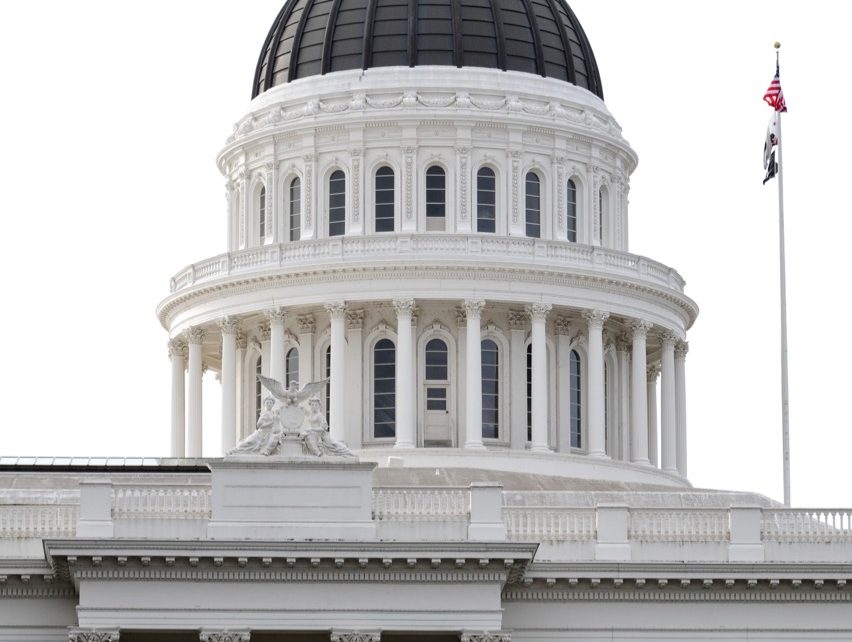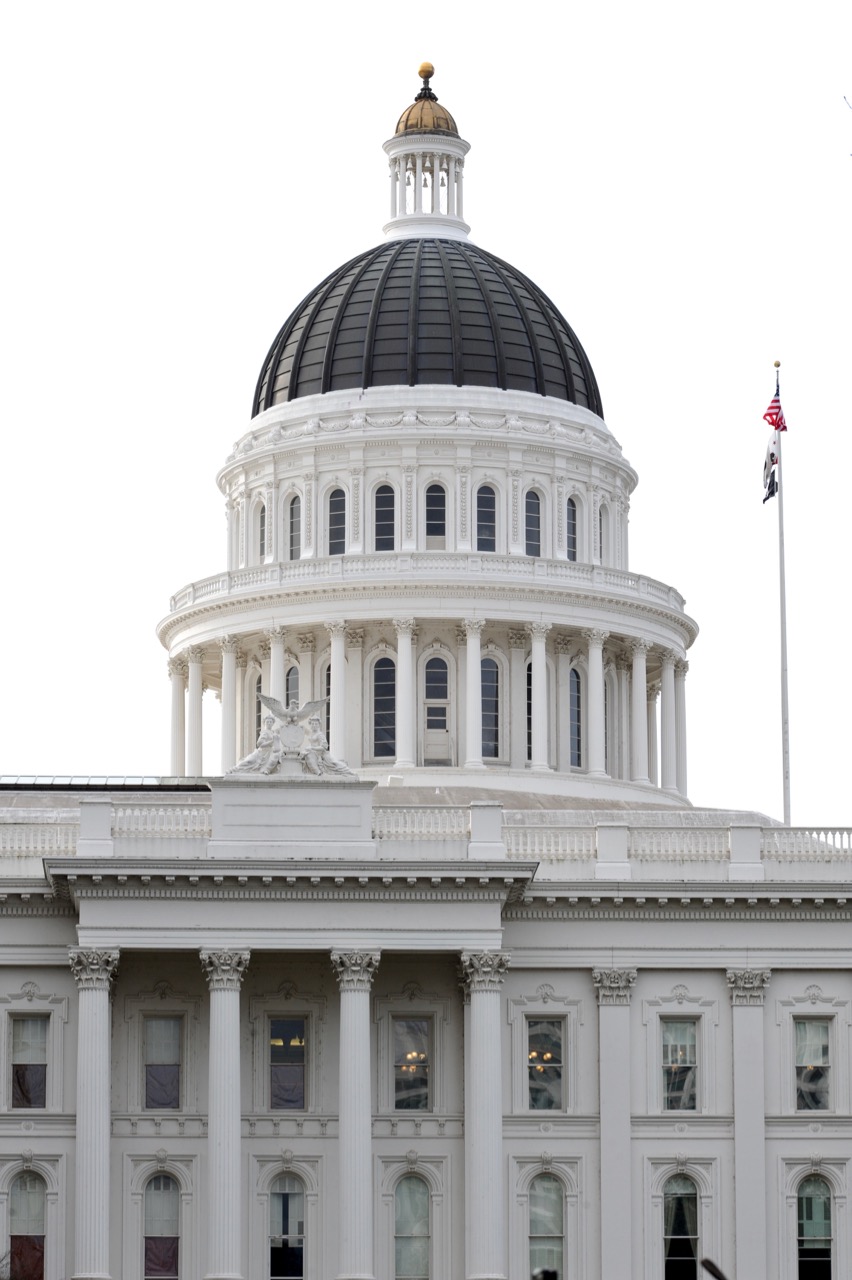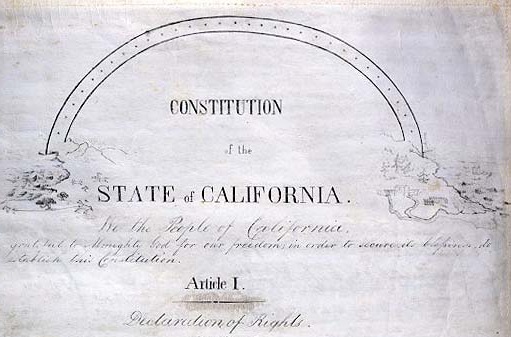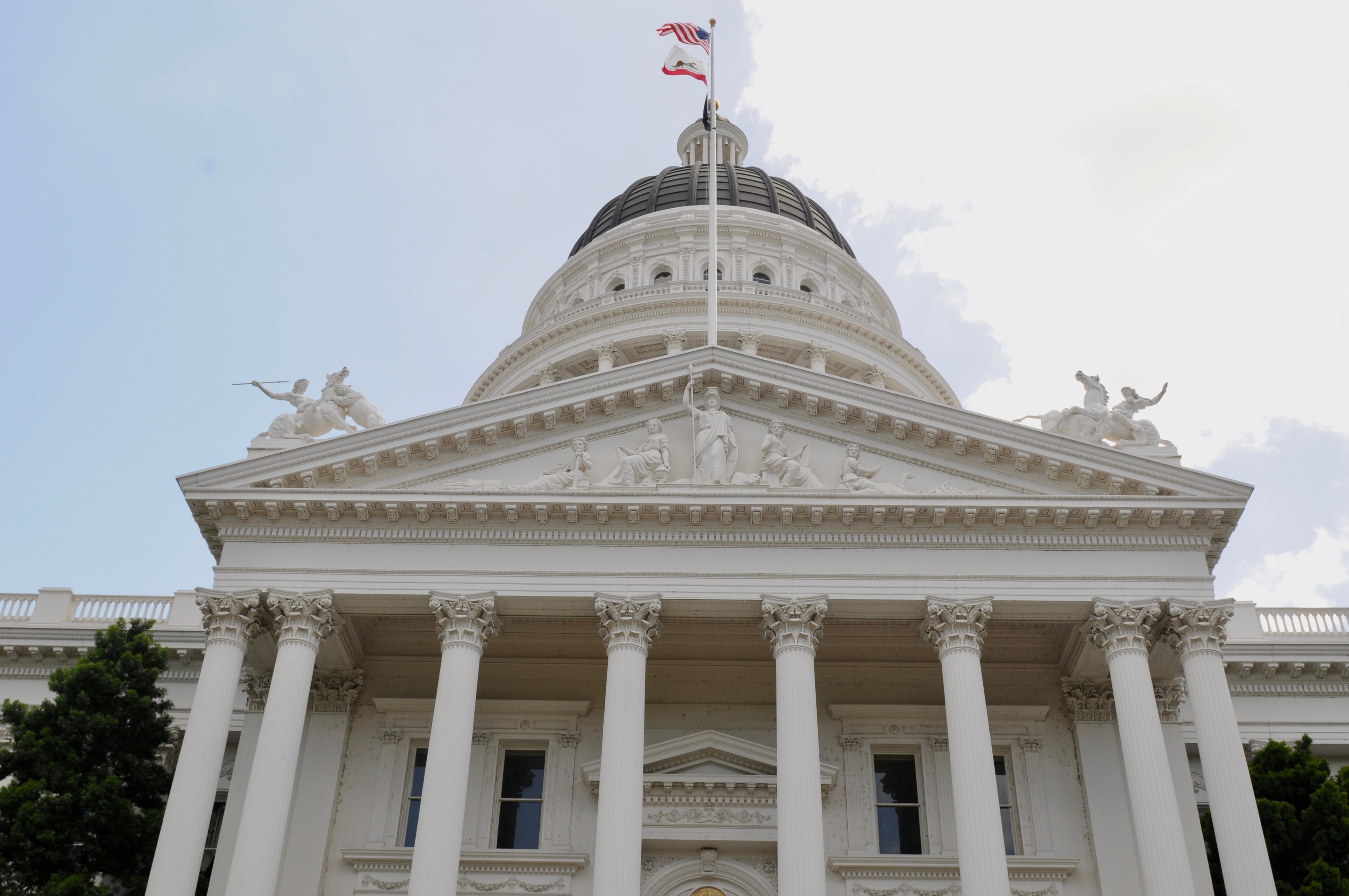
California State Capitol. (Photo: Kevin Sanders for California Globe)
The Mechanics of California’s Forms of Direct Democracy
There is no limit to what can be put on the California ballot
By Chris Micheli, January 21, 2019 8:07 am

California has three forms of direct democracy and they are set forth in Article 2 of the state constitution. The purpose of this article is to provide information on the initiative, referendum and recall processes used in this state.
The California Ballot Initiative Process
Proposing statutes and constitutional amendments is done by presenting a petition to the Secretary of State. That written petition must include the text of the proposed statute or constitutional amendment. Before circulation of an initiative petition for signatures, a copy must be submitted to the Attorney General who then prepares a title and summary of the measure as provided by law.
If the Attorney General determines a fiscal analysis is necessary, the measure is sent to the Department of Finance and Joint Legislative Budget Committee for that fiscal analysis. When Title and Summary has been completed (usually 15-45 days from date of submission) this becomes the “Official Summary Date.”
The Secretary of State certifies the petition based upon the signatures collected (5% for statutes and 8% for constitutional amendments based upon all votes for governor at the last gubernatorial election). Proponents have 180 days for signatures to be obtained. Only registered voters can sign in their county of registration. Measure placed on ballot of next statewide general election at least 131 days after the measure qualifies.
An initiative statute approved by a majority of voters takes effect on the fifth day after the Secretary of State files the statement of the vote for the election at which the measure is voted on. Nonetheless, the measure may provide that it becomes operative after its effective date. If the provisions of two or more measures approved at the same election conflict, the provisions of the measure receiving the highest number of affirmative votes prevails.
An initiative cannot name any individual to hold any office, or name or identify any private corporation to perform any function or to have any power or duty, may be submitted to the electors or have any effect.
The California Secretary of State prepared the following information on initiatives in California. Prior to 1960, initiative measures appeared on general election ballots only. From 1960 to mid-2011, initiative measures appeared on primary, general, and special election ballots. As a result of SB 202 (Chapter 558, Statutes of 2011), from July 2011 forward, initiative measures once again only appear on general election ballots. Ballot measures were not numbered until the general election of 1914.
In addition, the California Secretary of State prepared the following summary of data on statewide ballot measures between 1912 and 2017:
A total of 1,996 initiatives were titled and summarized for circulation.
·1,977 direct initiatives
·19 indirect initiatives
A total of 1,483 initiatives (75.26%) failed to qualify for the ballot.
A total of 376 initiatives (19.26%) qualified for the ballot. One indirect initiative was adopted by the Legislature
Of the 376 which qualified, 132 initiatives (35.11%) were approved by the voters.
·40 approved were constitutional amendments
·78 approved were statute revisions
·14 approved were constitutional amendments and statutes
A total of 241 initiatives (64.10%) were rejected by the voters.
A total of 3 initiatives (0.80%) were removed from the ballot by court order.
A total of 113 initiatives (5.66%) were withdrawn from circulation.
Finally, the California Secretary of State tracks all initiative and referenda measures by the following categories:
|
(7) |
|
|
(0) |
|
|
(0) |
|
|
(9) |
|
|
Initiatives and Referenda Pending at the Attorney General’s Office |
(2) |
|
(2) |
|
|
(9) |
The California Referendum Process
In California, the people also have the power to approve or reject statutes or parts of statutes. Historically, most referendum efforts have either failed to qualify or have been rejected by the voters. An important note is that the filing of a valid referendum challenging a statute stays implementation of the statute until after a vote by the electorate.
Proposing a referendum can be done to approve or reject (but reject is almost every instance when it is used) either entire statutes or parts of statutes. There are four types of bills that are not subject to referendum: urgency statutes, statutes calling elections, and statutes providing for tax levies or appropriations for usual current expenses of the State.
Just like an initiative, a referendum is done by presenting the referendum to the Secretary of State within 90 days after the enactment date of the statute. Before circulation of a referendum petition for signatures, a copy must be submitted to the Attorney General who then prepares a title and summary of the measure as provided by law.
Referenda can qualify for the statewide ballot up to 31 days before an election (unlike initiatives which must qualify 131 days before). Since July 2011, referendum measures only appear on general election ballots.
Once petitions are filed, county elections officials have 8 working days to determine a raw count of the signatures submitted and report their findings to the Secretary of State. The Secretary of State certifies the petition based upon the signatures collected (5% based upon the votes for all candidates for Governor at the last gubernatorial election).
Once on the ballot, the law is repealed if voters cast more NO votes than YES votes on the referendum in question.
A referendum approved by a majority of voters takes effect on the fifth day after the Secretary of State files the statement of the vote for the election at which the measure is voted on. If a referendum petition is filed against a part of a statute, the remainder of the statute is not delayed from going into effect.
The California Secretary of State has prepared a complete list of referenda measures that have been placed on the ballot or circulated for signature but did not qualify for the ballot. There have been 89 attempted referenda measures since 1912 in California.
The following is the data from the SOS: Between 1912 and 2016: A total of 89 referenda were titled and summarized for circulation. A total of 39 referenda (43.82%) failed to qualify for the ballot. A total of 50 referenda (56.18%) qualified for the ballot. Of the 50 which qualified and have been voted on, 21 referenda (42%) were approved by the voters. A total of 29 referenda (58%) were rejected by the voters.
The California Recall Process
The state’s electors have the power to remove an elective officer which is initiated by delivering to the Secretary of State a petition alleging a reason for the recall. However, the sufficiency of the reason for the recall is not reviewable.
Thereafter, proponents have 160 days to file the signed petitions. A petition to recall a statewide officer must be signed by electors equal in number to 12 percent of the last vote for the office, with signatures from each of 5 counties equal in number to 1 percent of the last vote for the office in the county.
Signatures to recall Senators, members of the Assembly, members of the Board of Equalization, and judges of courts of appeal and trial courts must equal in number 20 percent of the last vote for the office.
An election to determine whether to recall an officer and, if appropriate, to elect a successor must be called by the Governor and held not less than 60 days nor more than 80 days from the date of certification of sufficient signatures. A recall election may be conducted within 180 days from the date of certification of sufficient signatures in order that the election may be consolidated with the next regularly scheduled election occurring wholly or partially within the same jurisdiction in which the recall election is held. This is allowed if the number of voters eligible to vote at that next regularly scheduled election equal at least 50 percent of all the voters eligible to vote at the recall election.
Thereafter, if the majority votes to recall the state officer, then the officer is removed and, if there is a candidate, the candidate who receives a plurality is the successor to that office. The officer may not be a candidate. A state officer who is not recalled must be reimbursed by the State for the officer’s recall election expenses legally and personally incurred. In addition, another recall may not be initiated against the officer until six months after the election.
The California Secretary of State prepared the following information on recalls in California. Since 1913, there have been 164 recall attempts of state elected officials in this state. Ten recall efforts collected enough signatures to qualify for the ballot and, of those, the elected official was recalled in six instances.
|
Attempted |
Official |
|
49 |
Governor |
|
1 |
Lieutenant Governor |
|
5 |
Attorney General |
|
1 |
Insurance Commissioner |
|
2 |
Member of the Board of Equalization |
|
28 |
Member of the State Senate |
|
50 |
Member of the Assembly |
|
1 |
Supreme Court (entire membership) |
|
27 |
Supreme Court (individual justices) |
Recall attempts that have qualified for the ballot:
- 1913 Senator Marshall Black (R-Prog.) – 28th Senate District
- 1913 Senator Edwin E. Grant (D) – 19th Senate District
- 1914 Senator James C. Owens (D) – 9th Senate District
- 1994 Senator David Roberti (D) – 20th Senate District
- 1994 Assemblyman Michael Machado (D) – 17th Assembly District
- 1994 Assemblyman Paul Horcher (R) – 60th Assembly District
- 1995 Assemblywoman Doris Allen (R) – 67th Assembly District
- 2003 Governor Gray Davis (D)
- 2007 Senator Jeffrey Denham (R) – 12th Senate District
- 2018 Senator Josh Newman (D) – 29th Senate District
Successful recall attempts:
- 1913 Senator Marshall Black (R-Prog.) – Herbert C. Jones (D-Prohib.) elected successor
- 1914 Senator Edwin E. Grant (D) – Edwin L. Wolfe (R) elected successor
- 1994 Assemblyman Paul Horcher (R) – Gary Miller (R) elected successor
- 1995 Assemblywoman Doris Allen (R) – Scott Baugh (R) elected successor
- 2003 Governor Gray Davis (D) – Arnold Schwarzenegger (R) elected successor
- 2018 Senator Josh Newman (D) – Ling-Ling Chang (R) elected successor
- Adoption of Unmarried Minors - December 28, 2025
- Bonds and Undertakings - December 28, 2025
- Joint Debtors in California - December 27, 2025




An issue this article fails to raise is one where a person or group clears all of the hurdles necessary to place an initiative on the ballot only to have the California Supreme Court step in and pull it from the ballot. Californians have certainly placed a number of stupid initiatives in front of the people for a vote, as is their right under the constitution. But when California’s Supreme Court pulled Tim Draper’s Three States Initiative (Proposition 9) from the November 2018 ballot, the people’s will was thwarted by an activist court acting as the electors’ nanny. For this heinous intrusion into direct democracy, these Supreme Court justices should be impeached.
YO this article heated fr.